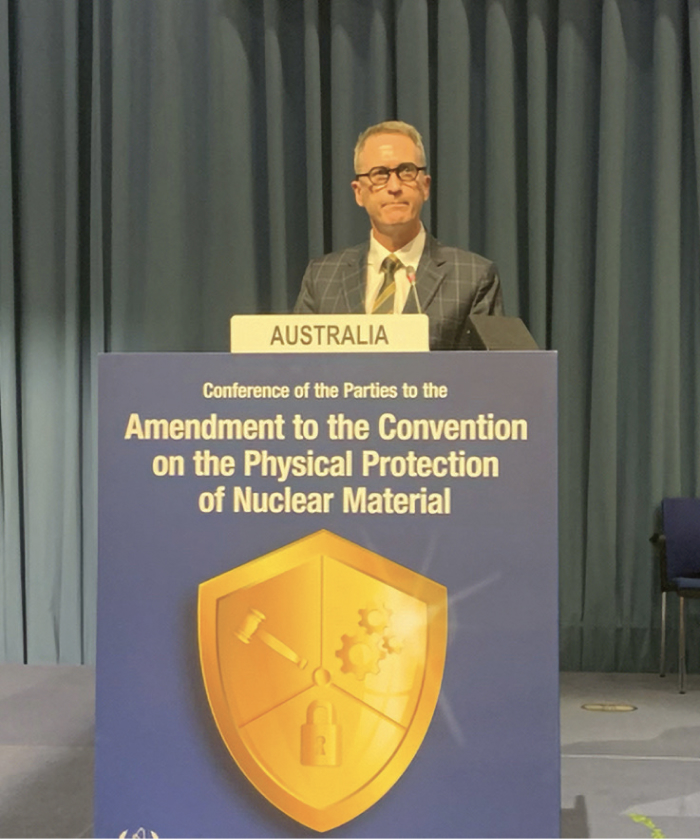The Convention on the Physical Protection of Nuclear Material and its Amendment
The 1979 CPPNM was established primarily to facilitate cooperation between states for the physical protection of nuclear material in international transport.
Over time, calls to expand the scope to apply to nuclear material in domestic use, transport, and storage led to agreement on an Amendment to address this and to criminalise both acts of sabotage against nuclear facilities and trafficking in nuclear materials. While adopted in 2005, it took over ten years for the Amended Convention (the A/CPPNM) to enter into force in 2016.
Australia's Engagement at the A/CPPNM Review Conference
The first A/CPPNM Review Conference was held in-person from 28 March to 1 April 2022 at IAEA Headquarters in Vienna, Austria. Proceedings and discussion centred on the Convention's core pillars: (1) physical protection of nuclear material and facilities, (2) criminalisation of malicious acts relating to nuclear material and facilities, and (3) expanded international cooperation on physical protection.

Director General ASNO Dr Geoffrey Shaw at the A/CPPNM Review Conference. (Image courtesy of ASNO)
The Review Conference was set against the backdrop of Russia's illegal invasion of Ukraine and the threat to Ukrainian nuclear facilities, including the Zaporizhzhia and Chornobyl Nuclear Power Plants. States Parties expressed concern regarding the security of nuclear material at these facilities as well as the welfare of plant personnel, and Australia joined a majority calling on Russia to withdraw immediately from occupied territories and to enable the reestablishment of Ukraine's nuclear security.
Implementing effective, integrated cybersecurity in the physical protection of nuclear material and nuclear facilities was a particular focus for States Parties. As traditional physical protection measures like electronic access control to facilities and closed-circuit television are reliant on computer-based systems, we simply cannot have effective physical protection without comprehensive cyber security. Australia is meeting this challenge by integrating our operational cyber security arrangements at nuclear facilities with our physical protection requirements and Australia's national framework for cyber security. Our engagement at the Conference included a call to action to centre effective cybersecurity in States' nuclear security programs, recognising this as an essential ingredient in meeting the A/CPPNM's nuclear security obligations.
Promoting the need for ongoing review, transparency and accountability in global nuclear security, States Parties requested that the IAEA Director General convene a second Review Conference within six years. I was particularly pleased by States' commitment to making real progress as a community of practice with a common interest in ensuring the robust, resilient and evolving security of nuclear materials into the future.

